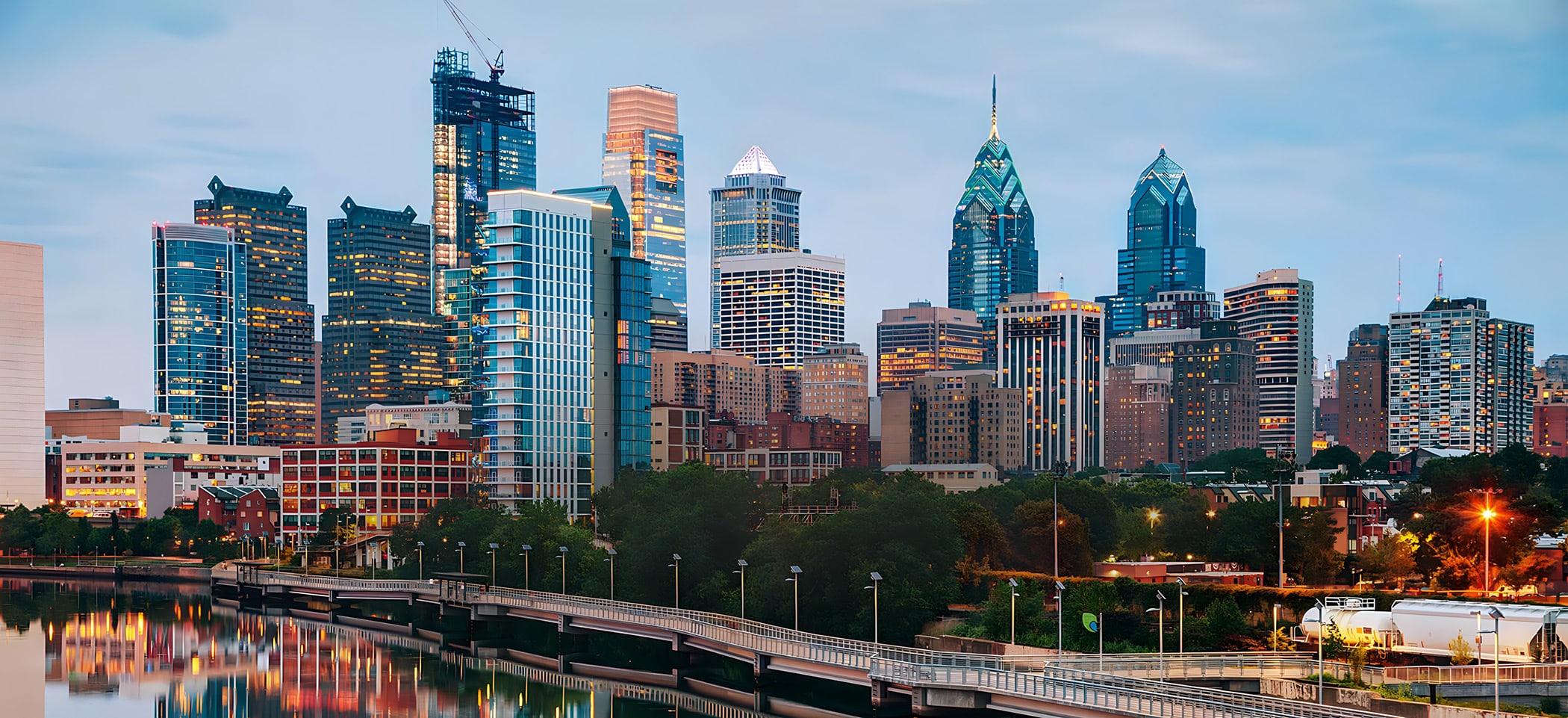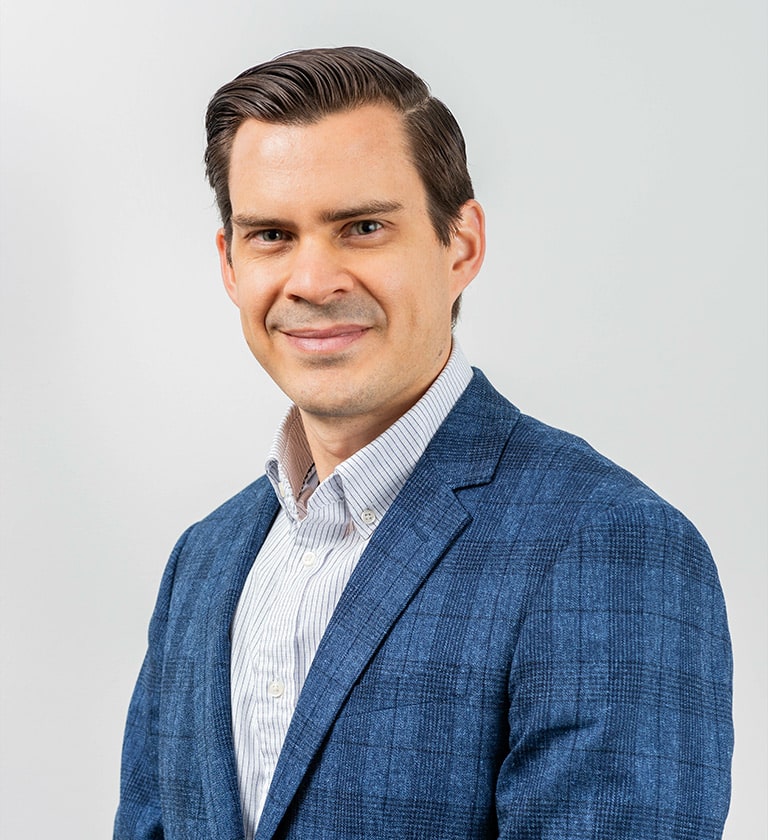
Eyelid Surgery Philadelphia, PA
The eyes are a central focus of the face. Rejuvenating the upper and lower eyelids brings a refreshed and youthful appearance to the entire face. Dr. Lozada is committed to providing the highest quality aesthetic and reconstructive services for all his Philadelphia and New Jersey patients.
Embrace the Eye-Opening Benefits of Expert Blepharoplasty
Blepharoplasty isn’t merely a cosmetic enhancement; it’s a door to renewed self-confidence, clearer vision, and a rejuvenated appearance. As one of the leading facial surgeries, it artfully addresses aging concerns while ensuring you present the most refreshed version of yourself to the world.
Before and After Blepharoplasty Photos
* All patients are unique and individual results may vary.

Before Blepharoplasty: What Happens To The Eyes During The Aging Process?
The eyes are one of the most noticeable areas of the face and one of the first to show signs of the aging process. Patients seeking lower or upper eyelid surgery frequently complain of a “tired” or “angry” look.
As we age, the skin and muscle around the eyes lose their natural elasticity. This allows fat from around the eye to protrude out. The end result is excess sagging skin which gives a heavy and tired appearance to the eyes as well as protruding fat which cause the eyelid “bags”.
An eyelid lift (blepharoplasty or eyelid surgery) addresses the components of the skin, muscle, and fat that are problematic.
Effective Blepharoplasty gives a rested and younger appearance to the eyes with no signs that any cosmetic surgery has been done.
What is Blepharoplasty?
Blepharoplasty, also known as eyelid surgery, is a cosmetic procedure that can be performed to improve the appearance of the eyelids. The surgery can be performed on both the upper and lower eyelids and can be used to correct drooping or sagging skin, excess fat deposits, and wrinkles or fine lines.
If your upper or lower eyelids are causing you vision problems then this is a good indication for undergoing eyelid surgery. General anesthesia is usually not necessary for upper and lower lid surgery.
Upper Eyelid Blepharoplasty
Rejuvenation of the upper eyelid typically involves removal of the excess skin that folds over the upper eyelid. This excess skin, termed dermatochalasis, obscures the natural upper eyelid crease that is a sign of youth. The correct amount of skin to be removed is carefully measured and marked before the surgery. This procedure applies to blepharoplasty for hooded eyes too.
Typically, only the excess skin is removed. Occasionally a small portion of the underlying muscle is removed as well. If necessary, a small amount of underlying excess fat is removed. The incisions are closed using fine sutures which leave a nearly invisible scar hidden in the crease of the upper eyelid.
Lower Eyelid Blepharoplasty
Can You Fix the Tear Trough with Blepharoplasty?
A common complaint is the tear trough or Lower Eyelid “hollow” that gives a tired appearance. This occurs as we lose volume in our cheeks and midface over time.
To fix the volume loss, we re-volumize the area with something. One option is to use fat. In fat transfer surgery, fat is taken from the abdomen or thigh, processed, and then injected in these specific areas to replace the volume.
Fat transposition is another option where instead of removing the herniated orbital fat around the eyes, it is moved to the area where volume is needed and secured. Both options effectively treat the tear trough and give very natural results.

Need more information?
Call us or email us to make an appointment
What is the Cost of Blepharoplasty?
The cost of blepharoplasty can vary depending on the surgeon, geographic location, and other factors. However, according to the American Society of Plastic Surgeons, the average cost of eyelid surgery is $4,100.
This does not include the cost of anesthesia, surgery center, and hospital fees are also not included in this estimate which can add to the total bill. If you are considering eyelid surgery, it is important to do your research so you can be sure you are getting the best possible care at a reasonable price.
Recovering from Blepharoplasty Surgery
Following carefully the blepharoplasty aftercare instructions will allow excellent outcomes.
The First 24 to 48 Hours After Your Eyelid Surgery
Immediately after surgery you will have ice packs placed over your eyes for comfort. Swelling and bruising are common immediately after blepharoplasty surgery with swelling typically peaking around day three. Cool compresses and head elevation can greatly help the minor discomfort and improve the swelling that occurs.
This is not a painful procedure and patients typically only need non-narcotic medicine. All patients after blepharoplasty receive eyedrops to keep the eyes lubricated and ointment to place on all incisions.
The First 2 Weeks After Eyelid Surgery
The bruising and swelling should be mostly resolved a week after surgery at which time any sutures that were placed will be removed in the office. Any minor bruising can be covered with makeup. Lubrication with eye drops will continue for the first week until your post-op visit. Avoidance of strenuous activity for a period of 2 weeks after surgery is advised but can be resumed after your post-op visit.
TESTIMONIALS

Why Should I Choose Dr. Kirk Lozada?
Dr. Lozada is a Facial Plastic & Reconstructive Surgeon and Otolaryngology Head & Neck Surgeon. Dr. Lozada is committed to providing the highest quality aesthetic and reconstructive services for all his patients in the Philadelphia area and New Jersey.
At our office, a personalized treatment plan is essential, and we allow sufficient time during consultation to develop a unique understanding of each patient’s desires. Dr. Lozada completed his fellowship at the University of Pennsylvania and has trained with the top American Board Certified Plastic Surgeons in Philadelphia, New York, and New Jersey.
Every face tells a unique story. Dr. Lozada’s approach to blepharoplasty is highly personalized. During your consultation, he assesses your facial structure, skin quality, and aesthetic goals to craft a tailored treatment plan that aligns with your vision of beauty.
Dr. Kirk Lozada is currently a member of the American Academy of Facial Plastic & Reconstructive Surgery and has numerous publications and presentations in the field of facial plastic surgery.







